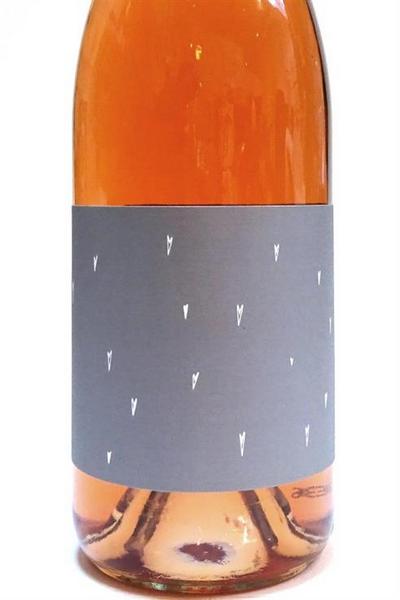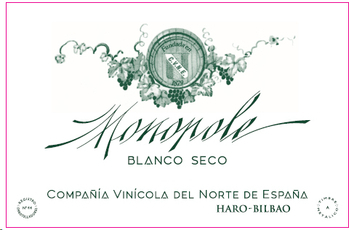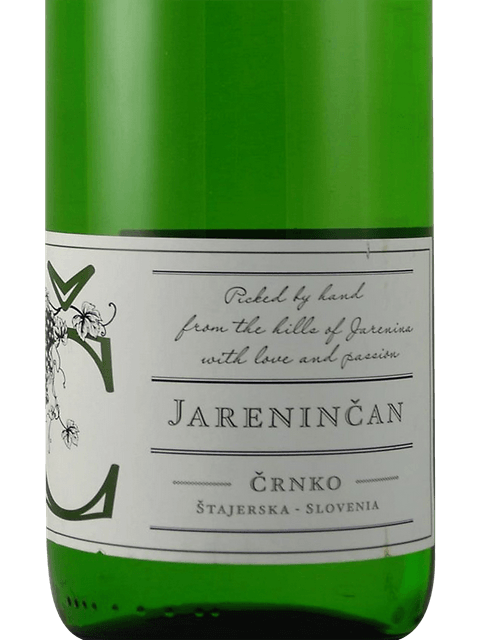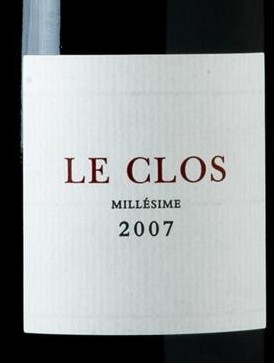Broc Love Rosé
Tournefeuille Bordeaux
Cune Monopole Blanco
Črnko Jareninčan White blend
Pulpo Rosso
Le Clos Rouge
Guilhem Rouge
BD Pinot Noir
donna paolina Greco di tufo
Scribe Rosé
Custero Rioja
Lan D-21 Rioja
Broc Love Rosé – Organic, vegan and Natural
Founded by Chris Brockway, Broc Cellars is built on a philosophy of sourcing sustainable and organic fruit on the way to creating exceptional wines. Brockway takes a hands-off approach, allowing nature to be in charge.
Broc’s “Love” red and white have many fans already – here’s the delicious “Love” rosé made from a blend of three grape varietals from California’s North Coast vineyards – all grown organically. Valdiguié lends mouthwatering acidity, while zinfandel contributes spice notes, and a touch of trousseau results in a unique texture. After destemming, the fruit was pressed into stainless steel, with all three varietals fermenting together. The result is fantastically refreshing – zesty aromatics yield to juicy watermelon, cherry, and blood orange notes for easy drinking. It finishes clean and refreshing, with hints of ruby red grapefruit peel and wild herbs.
This wine, like all Broc Cellars wines, is made naturally, meaning only native yeast is used to spark fermentation, and nothing is added except an occasional minimal dose of sulfur prior to bottling. Organically grown, low-intervention/natural wine, vegan.
Winery notes: “The inspiration for our Love Wines comes from the desire to keep as many older vine plantings and forgotten vineyards of California alive. Valdiguié, a grape formerly known as Napa Gamay, has so much history in Northern California. We love working with this grape. It plays so nicely with Zinfandel and Trousseau grown in California’s soil. The Valdiguié comes from Rosewood Vineyard located in Mendocino. From Wirth Ranch located in Solano County Green Valley, we get some Valdiguié in addition to Trousseau. The Zinfandel is from Arrowhead Mountain Vineyard in Sonoma. All three vineyards are farmed organically.”
At Broc Cellars all wines are made using spontaneous fermentation; they don’t add anything – this includes nutrients, yeast, bacteria, enzymes, tannins, or other popular fermentation agents. Sulfur is a naturally occurring element in all wines, the amount found can vary. Broc adds little to no S02, depending on the wine and style. Love Rosé is foot-tread and left on the skins for 12 hours. Then it was pressed into tank where the varieties co-fermented for two weeks. The result is a 100% finished wine. This means it fermented until it went dry using only native yeasts and went through spontaneous malolactic fermentation. Each variety brings a unique quality to the wine – spice comes from the Zinfandel, acidity from the Valdiguié, and texture from the Trousseau.
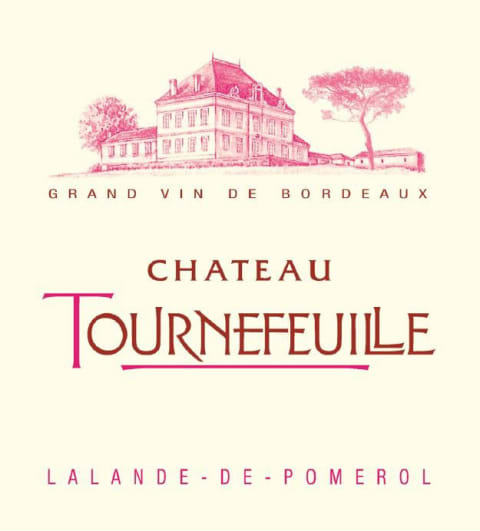
Chateau Tournefeuille Lalande de pomerol – Organic
Bordeaux Primer: Despite current trends towards regions like the Loire Valley and the Jura among wine geeks, Bordeaux remains the most popular wine region in the world. It’s also the largest, with 7500 producers, over 60 appellations, almost 300,000 acres planted to grapes, producing 75 million cases of wine per year!
The Bordeaux wine region has historically been regarded as one of the best wine regions in the world, especially when it comes to red wine production. Home to what are referred to as the Bordeaux grapes (Cabernet Sauvignon, Merlot, Cabernet Franc, Malbec and Petit Verdot — and historically Carmenère), the region is divided in two: the Left Bank, home to mostly Cabernet Sauvignon-based wines and gravelly soils; and the Right Bank, home to mostly Merlot and Cabernet Franc-based wines and clay and limestone soils.
The bank referred to in these names is the Gironde, a large estuary formed from the meeting of the rivers Dordogne and Garonne just downstream of the center of Bordeaux city. Covering 245 square miles, it is the largest estuary in western Europe. The Gironde is approximately 50 miles long and two to seven miles wide.
Left Bank blends tend to be higher in tannins, alcohol and acidity. They are powerful, rich wines that are said to age a bit better than wines from the Right Bank. This is also the bank that made the region famous. Right bank blends tend to be softer, less tannic, and lower in alcohol and acidity. Because Merlot is the dominant grape, they are much juicier and usually ready to be drunk much earlier than Left Bank Bordeaux, and they’re often less expensive.
The success of Bordeaux can be boiled down to one simple trait: location. Bordeaux not only possesses an ideal climate and soil for growing grapes but, due to Bordeaux being a major port city, it also gave local winemakers the opportunity to access different regions of the world. Unlike landlocked Burgundy, Bordeaux was able to capitalize on the ships and wealthy merchants that filled its port daily, always sending them off with wine. As wealthy merchants returned to their home countries with wine, Bordeaux’s acclaim spread. Wealthy trading classes in Great Britain and the Netherlands, having access to the merchants traveling back and forth to Bordeaux, began collecting the wine and it was from this point on that Bordeaux cemented its reputation as one of the fine wines of the higher class.
The view from Emeric Petit’s terrace at Château Tournefeuille is really something else. Turn left, there’s Château Trotanoy. Average price for the 2018…..$350. Turn right, hello, Château Lafleur-Petrus. Average price for the 2018….$250 Then, straight ahead, lies one of the most prestigious estates in the world, Château Petrus. Average price for the 2018….brace yourself….$5600. That’s per bottle. I don’t know where Emeric’s ancestors were when they drew the line between Pomerol (Petrus, Trotanoy, Lafleur-Petrus) and Lalande-de-Pomerol in 1780, but they definitely weren’t at the table. Emeric definitely misses out on some scratch but gains a legion of dedicated, die-hard customers because when you taste his brilliant 2014, it’s clear that Tournefeuille belongs in that neighborhood.
Chateau Tournefeuille is a lovely estate that dates from the mid-18th century and was acquired by the Petit family in 1998. It is owned and managed by Emeric Petit whose family have been in the wine business since 1735. Tournefeuille refers to the “turning leaves” on the windy hill where the property lies. Located in the village of Néac, Cha^teau Tournefeuille benefits from an exceptional terroir, very similar to that of Pomerol. Its vineyards are adjacent to some of the most prestigious estates in the Pomerol region, including Château La Fleur Petrus, Château Gazin and Petrus. In fact, Tournefeuille’s vineyards share the same blue clay terroir with Petrus.
In the early years of his ownership of the estate, Emeric Petit was assisted by the famous oenologist Mr. Jean-Claude Berrouet (of Petrus) and Ms. Catherine Cohen. Today, Emeric is a rising star and making a name for himself with his consistently excellent wines. Tournefeuille is a lovely boutique estate and a prime example of the new wave of attractively priced, outstanding wine coming from the right bank of Bordeaux. It is one of the leading estates in the Lalande-de-Pomerol appellation.
The vineyard is 18 hectares in size (44 acres) from a single vineyard. The vines are 40 years old in average and lie on clay-gravel soils. After manuel harvest, the grapes are sorted by hand and are fermented in concrete tanks. Vinifications are done by parcel to increase precision. The wine is aged 12-14 months in 80% new French oak before bottling. Estate grown and bottled.
Cune Monopole Blanco seco – Sustainable and Vegan
Cune (the initials C.V.N.E. are short for Compania Vinicola del Norte de Espana, but in common practice, everyone calls it “coo-nay”) is a well known winery in the Rioja region that works in a very traditional style.
This legendary winery was established in 1879, and is credited as the reason for Rioja’s meteoric rise to international wine fame. Between championing gravity-led processes and their eventual acquisition of like-minded wineries, they’ve had a profound impact on the state of Spanish wine.
From their humble beginnings near a railroad station in Haro, they’ve evolved into a winery that is exciting, dependable, and focused. Today their vineyards span the acclaimed plains of Rioja Alta and Alavesa, and their wines mature in the expanse that is their notable Eiffel cellar.
100% Viura, fermented and raised in stainless steel. One of the region’s iconic go-to whites, and in fact Spain’s oldest existing white wine brand, produced under the same name since 1915.
90 points Vinous “Pale, green-tinged straw. Racy, sharply focused citrus and orchard fruit aromas pick up floral and tarragon nuances with air. Taut and focused on the palate, offering lemon pith, yellow apple, and nectarine flavors that deepen through the back half. Closes smooth, with very good tenacity, leaving honeysuckle and peach pit notes behind.”
Črnko Jareninčan White blend (Sustainable)
The Črnko farm is located on the eastern side of Slovenia, north of Maribor and just south of the Austrian border. It is a breathtaking environment of endless rolling green hills lined with vineyards that stretch the length of the horizon. Until 1918, this area was known as Lower Styria (formally Austria) and had been for many centuries. Grapes have also been cultivated here for over 2,000 years in addition to famed aromatic hop fields and ethereal pumpkin seed oil; a real treat with the local wines. The rich agricultural diversity of these Slovenian Hills owes itself to fertile soils and the unique convergence of Continental, Alpine and Mediterranean climates. In large part it is the balance between these climates that make the wines of Slovenia so regional and so interesting. The bulk of Črnko’s production is divided between their line of single varietal premium bottlings and the easy-drinking house cuvée Jareninčan.
Jareninčan is a blend of Welsch Riesling, Sauvignon Blanc, Muller-Thurgau and Chardonnay. The percentages of this field blend vary from year to year, but always produce a balanced and highly drinkable wine, which until the 2009 vintage, had only been sold locally in the nearby village of Jarenina.
All the fruit is estate grown and sustainably farmed. Riesling dominates the aromatics offering juicy tangerine and quince notes to the silty minerality that Crnko wines often share. During the summers in the village of Jarenina, locals mix it with sparkling water and consume it long into the night.
These humble liter bottles represent half of Črnko’s total production. High toned Laski Riesling and Ravenec, aromatic Muscats, and a silty minerality characteristic of the estate define this vintage. Thirst quenching and light on its feet with healthy acidity also make it difficult to set down. During the summers in the village of Jarenina, locals mix it with sparkling water and then proceed to consume well into the next day.
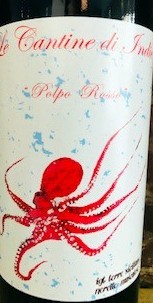 Pulpo Rosso – Organic
Pulpo Rosso – Organic
The vineyards of Nerello for Polpo Rosso are in Sambuca di Sicilia (Western Sicily).
Massimo Gregorio’s family has been making wine at this estate, on this hill, since 1730. However, it was Massimo that really found a passion for the art, and has dedicated himself fully to updating, and improving this beautiful family villa surrounded by green hills and valleys covered in vines, grains and land for grazing.
He turned all of the estate’s agriculture to organic, and with the help of Stefano Borsa from Pacina, and oenologist Fabrizio Tomas, has also started focusing more on indigenous varieties rather than the international varieties planted at the estate in the 80’s.
It was Fabrizio Tomas that had the idea to plant Nerello Mascalese on this terroir close to Palermo on the other side of the island from Etna. Grapes were hand-picked, macerated for around 6-8 days at cold temperature, destemmed, and left to ferment with skins in stainless steel vats for 5-6 days at a temperature of 75-77°F. Then the liquid part is drained from the bottom of the vat and the remaining skins are soft pressed.
Le Clos Rouge (Organic)
The Ancient Greeks perfected to the highest degree the arts of navigation and commercial trade. Beginning with the 8th century BC, they enormously increased their territorial holdings throughout the Mediterranean. Wherever they established trade relations, including the sundrenched southern coast of France, they introduced two new and valuable plantings: vineyards and olive trees. For this stroke of genius, we owe them an eternal debt of gratitude.
At the intersection of ancient land routes which linked Spain to Italy by the Roman Via Domitia and the Mediterranean to the Atlantic by the Via Aquitania along the river valleys of the Aude and Garonne, the nearby city of Narbonne has long benefited from an extremely favorable trade location as well as the home of quality wine from the adjacent Corbières vineyards.
The Languedoc region along the river Aude is rich in history. It was here that the Cathar religious dissidents of the 12th and 13th centuries built their impressive citadels in stone high up on craggy rock crests, all but inaccessible, so as to discourage enemy attacks. Peyrepertuse, Queribus, Puilaurens and Montsegur are the most famous sites, largely in ruins today.
It is in this region where Hervé Gantier sources the grapes for his exceptional Vin de Pays, Le Clos de Sainte Eugenie. Le Clos has gained a reputation for high quality rosé, the red cuvee and the new white Le Clos at very attractive prices. Based in the village of Puligny-Montrachet Hervé Gantier has built his career on creating wines that offer tremendous value and quality. Le Clos de Sainte Eugenie wines are crowd pleasers offering classically French wines at affordable prices.
Domaine Sainte Eugénie is positioned within the district of Fontfroide, the sweet spot of Corbières, with an 800-year history of viticulture. The estate is located within the foothills of the Pyrénées along the Mediterranean coast. It is composed of 45% Merlot, 20% Carignan, 20% Grenache, 15% Cabernet Sauvignon. Bringing into play terroir and savoir-faire, tradition and exotic flair, It is very soft on the palate, with a fresh, tangy acidity. The wine shows a wonderful balance, and is well-structured, elegant, and finishes with fine tannins. It will perfectly accompany a duck terrine laced with olives, a roast rack of lamb, barbecued beef or pork chops with fines herbs, as well as pheasant with wild mushrooms or boeuf bourguignon.
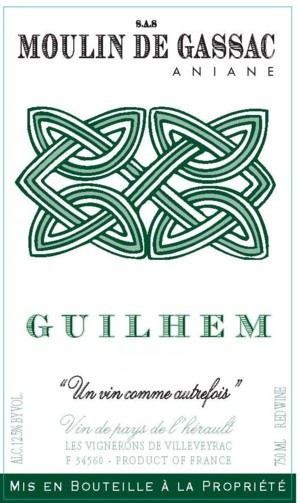 Moulin de Gassac Guilhem Rouge – Organic and Biodynamic
Moulin de Gassac Guilhem Rouge – Organic and Biodynamic
The producer, Mas de Daumas Gassac, has been variously described as ‘Lafite in the Languedoc’, ‘the only Grand Cru of the Midi’ and ‘exceptional’.
Several years back, the folks at Mas de Daumas Gassac began working with a neighboring cooperative in Sête to produce fun, full-flavored wines from the surrounding countryside and rocky hillsides. The goal is to produce wines grown under the strict vineyard and winemaking regimens employed at this unique domaine. Organic farming is de rigueur and the vinification is closely overseen by the Guibert family.
The results are splendidly aromatic wines that bring out the terroir of this Mediterranean region. The wines are named after St. Guilhem, the patron saint of the area where the village of St. Guilhem le Désert, one of the most stunningly beautiful villages in Europe, draws people from all over the world.
Rouge 40% Syrah, 30% Grenache, 30% Carignan. 100% De-stemmed. All grape varieties mixed together. Maceration 10-12 days. Six months of aging in stainless steel. Intense and deep red color. Aromatic complexity combining notes of red fruits and spices. Soft, fruity. Beautiful tannins…, a wine with finesse, balance, and fruit.
BORELL-DIEHL PINOT NOIR (PRACTICING ORGANIC AND VEGAN)
It is famously difficult to find great Pinot Noir on a budget. The finesse and elegance we expect from great Pinot just can’t often be found for under twenty bucks. And if you’re looking for something farmed organically? Even harder yet. That is, except this rare gem that checks all our boxes. It is unapologetically simple yet sublime for its crunchy red fruits, tempting floral notes, and earthy aromatics. You simply can’t get better Pinot at this price point anywhere.
Work this into your regular rotation. You won’t regret it.
The timbered home that houses this family-owned estate in Hainfeld was built in 1619, but the estate in its current form is far more recent than that. In 1990 Annette Borell and Thomas Diehl married and created Borell-Diehl by joining their families’ three wineries into one.
Starting with a total of 13 acres, they have since expanded to 85 acres of vineyards, all within 3 miles of Hainfeld, about 1/2 hour drive from Deidesheim.
Their holdings are a complex geology of loess, limestone, red sandstone, with deposits of minerally muschelkalk (
Annette and Thomas’ oldest son George is now poised to take over leadership at the estate. Having staged at important wineries lin the Pfalz, Rheinhessen, and Saar, as well as an internship in New Zealand in 2016, he will continue the winery’s focus on quality wines of extraordinary value.
All the wines are from estate-owned vineyards where rigorous crop thinning and hand-harvesting are the norm. In addition, no systemic pesticides or herbicides are used and there is no irrigation in the vineyards. As of 2018, the wines are certified vegan by the European Vegetarian Union.
Best vintage yet of this exquisitely fruity, silken textured, dry Spätburgunder (Pinot Noir) from the sunny Pfalz. Hand-harvested from estate-owned sites, tank-fermented and aged in large, neutral (three plus years old) French oak barrels.
This is Pinot in a modern, easy style with modest alcohol, fresh cherry fruit and a lip-smacking finish.
All wines at Borell-Diehl are sustainably dry-farmed with no herbicides or pesticides.

DONNA PAOLINA GRECO DI TUFO DOCG – ORGANIC
Donna Paolina winery was born in 2011 in a collaboration between three stars of Campania. With a storied history of making distinctive wines in the area, the Alois family was looking to expand their operations in the region; in particular, they had their eyes on the celebrated DOCGs of Greco di Tufo, Fiano di Avellino, and Taurasi.
And so they turned to their friends Carmine Valentino and Gerardo Contrada. Valentino is a renowned oenologist and strives to produce wines that showcase the beauty and essence of his native Campania, while Contrada owns vineyards perfect for making terroir-driven wines with the native grapes of Campania.
Each varietal is planted in its own single vineyard where the subtle differences in soil and climate make each wine unique. In his Marotta vineyard, he is growing Greco di Tufo, perfectly suited for the sandy, mineral-rich soil of this plot. His Parite vineyard is home to Fiano di Avellino, which enjoys the southeastern exposure of the slopes. The Falanghina is planted in the Solopaca vineyard, and finally, the Aglianico destined for Taurasi thrives in the clay soils of the Poppano vineyard.
Made up of 100% Greco di Tufo from the Santa Paolina – Contrada Marotta vineyard; the organically farmed 20-year-old vines grow upon beds of ideal sandy soils, planted to a southeastern exposure. Once harvested, the grapes ferment entirely in stainless steel to preserve the naturally acidic, fresh properties within the grapes. The wine ages in the bottle for three months before release.
Straw yellow in color with notes of apricot, peach, and pear on the nose. On the palate, this is clean and fresh with a beautiful soft texture which is nicely balanced by a lovely touch of acidity on the finish. A perfect food wine with enough heft to go with heavier foods, pair Greco with fish, chicken, seafood, veal, cheeses, and more.

Scribe Rosé of Pinot Noir – organic
The quality level of California Rosés has risen so rapidly in the past few years that it’s difficult, even for a rosé-centric shop like Farmstead to keep up with all the new pink producers! We discovered this wine in a restaurant a few years back and were impressed by how well it goes with all sorts of foods.
The Scribe Winery tale began with a charming young entrepreneur named Andrew Mariani and a storied piece of land – home, most recently, to a turkey farm – located about three miles east of the Sonoma town square. A mile-long driveway lined with palm trees leads to a decrepit hacienda built a century ago by two bootlegger brothers from Germany, and acres and acres of brush and cactus surround impeccably trellised grapevines. In the distance are vast expanses of conserved mountainside, where foxes and mountain lions roam beneath California bay laurel, oak and madrone trees.
Andrew Mariani and his brother Adam grew up in a farming family in Winters, California, and they believe themselves to be scribes of their land, with the winery a result of their labor. One of their primary goals is to help revive their property while making sure not to overpower nature’s patterns in the process. This goal is embodied in what they call “Forever Wild Farming,” which works to integrate their harvest into the existing ecosystem of the land.
Together with winemaker Kristof Anderson, the Mariani brothers have chosen to ban the use of chemicals on the property and instead solely participate in natural methods of vinification. The team works to increase the biodiversity of their land by encouraging natural species to thrive alongside the vines. Andrew reiterates that the outcome of these choices includes wines that are faithful representations of their origins and a sustainable model that enriches rather than depletes the land.
Made from Pinot Noir grapes (clones: Martini, Pommard, Mount Eden & Wadenswil) grown on the Scribe Estate on the south-west facing slope of Arrowhead Mountain. Harvested early in the season when the fruit is full of bright, high-toned acidity. 100% whole cluster direct pressed, followed by a long, cold fermentation in stainless steel tanks to preserve vibrant aromatics. Energetic and fruit-forward on the nose with a dry finish. Organic grapes.

Tentenublo Custero Rioja – Organic and natural
When Roberto Oliván turned 16, he inherited almost 20 acres of vines from his grandfather in the village of Viñaspre in Rioja Alavesa. He became the fourth generation of his family to work the vines in Rioja and soon thereafter he became the first to bottle wine from those vineyards.
Like many modern winemakers in Rioja, Roberto is looking to other wine regions for a model. He is not making the Riserva and Gran Riserva wines. Rather he is making site-specific wines. Custero is from a vineyard that he and his wife planted on marl and sandstone soils with selection massale vines from the family property. There are numerous rootstocks and nine different varieties interplanted. The elevation is around 2000 feet above sea level.
His wines look more to Burgundy or Beaujolais (although with more biodiversity) than to 1980’s Rioja, Bordeaux, or Napa.
Organic farming, native yeast fermentation, very low intervention in the cellar, some oak aging but very little noticeable oak flavor, and minimal SO2. All the fruit is harvested together and co-fermented whole-cluster. This is a new look at what ‘modern’ Rioja can be. Grapes: Tempranillo, Garnacha, Graciano, Monastrell, Viura, Malvasia, Malvasia Riojana, Garnacha Gris, Calagraño
Custero is their attempt to make a modern version of an old-style wine called Cosechero. Cosechero wines are made for early drinking, by and for the winemakers and grape growers themselves, using carbonic maceration to make a fruity, easy-to-drink wine. Just as carbonic maceration in Beaujolais has graduated from the early, very simple examples of Beaujolais Nouveau to some of the top examples in the region today, Roberto and Leyre are raising the bar here too. Many houses still make this style of wine but it is rarely exported.
Custero is an attempt to capture the charm of this style but with more refinement and complexity. It is whole-cluster fermented but with more extraction than with fully carbonic wines – just like you find in many partial carbonic wines around the world today.
This wonderful field blend red is sourced from his youngest (four to seven years old) vineyards. Garnacha, the dominant grape, is mixed with eight different red and white (!) varieties, a common practice in traditional vineyards. Aging takes place in cement and oak. This is a refined version of the somewhat rustic wines of yesteryear (so is its label) showing pure, precise fruit and fantastic texture.
The grapes are cultivated using 100% organic, environmentally friendly agriculture and no chemical products. When the grapes reach optimum ripeness, they are harvested by hand.

LAN D-12 Rioja – Sustainable
A concentrated, modern-style Rioja, made from 100% Tempranillo grapes.
Grapes are from a 30 year-old vineyard located in Lanciego (Rioja Alavesa) and a 15 year-old vineyard in Briones (Rioja Alta).
Alcoholic cold fermentation in stainless steel tanks in order to maintain aromatic potential and maximize colour extraction. Micro-oxygenation and lees-stirring were carried out in vat number 12 in the period between alcoholic fermentation and malolactic fermentation, in order to stabilize the aromatic and phenolic compounds and achieve greater volume on the palate, softening the tannins.
Twelve months ageing in barrels: 70% new American oak sourced in the Appalachians and 30% new French oak from the forests of Chateauroux and Loches. The extra-fine grained wood was selected and dried naturally for 36 months to obtain fine and elegant oak that integrates perfectly with the wine. Very careful ageing aimed at maintaining the intense fruit, adding the necessary aromatic complexity and refining the tannins.
Deep, very intense garnet red. Intense aromas of cranberries, very ripe red fruit, prunes and dried apricots. Liqueur-like notes, along with vanilla, cinnamon and resin. Structured, broad and flavourful on the palate.
92 points, Wine Enthusiast: A dark color and ripe aromas of blackberry, prune, lemony oak and graphite get this crianza off to a serious start. A concentrated palate feel is juiced up by bright acidity, while this tastes of wild berry fruits topped with chocolaty oak. Drink this smooth operator through 2025.
Bodegas LAN is a relative newcomer to the Rioja scene, having been founded in 1972. The name “LAN” is an acronym for the three provinces that make up Rioja, Logroño, Alava, and Navarra.
LAN produces some of the most consistent, value-driven examples of Rioja on the market, and is also is an established leader on the premium side. LAN’s iconic 72 hectare Viña Lanciano vineyard sits on a breathtaking natural meander along the Ebro river and is the basis for most of the company’s top bottlings.
The spirit of experimentation and innovation permeates the culture at LAN, and winemaker María Barúa is continually pushing the limits and preconceptions people have of the region.


